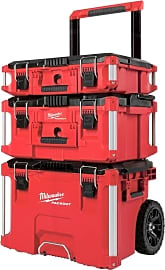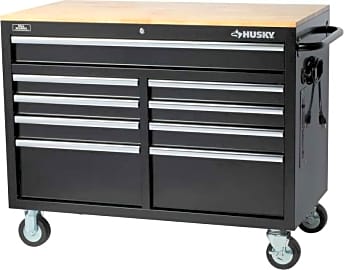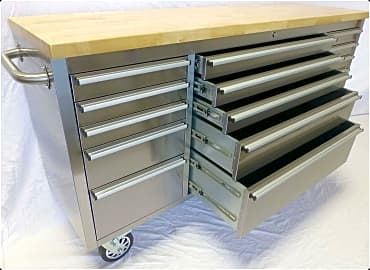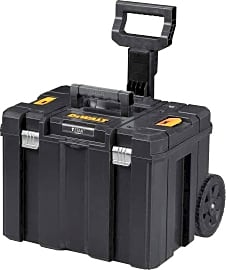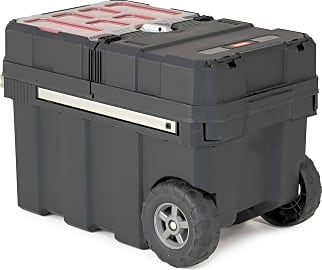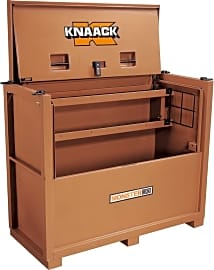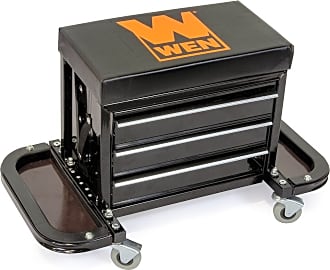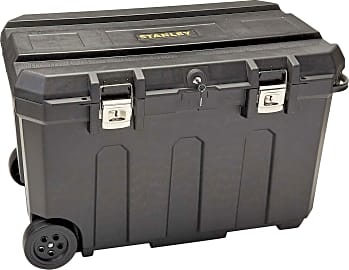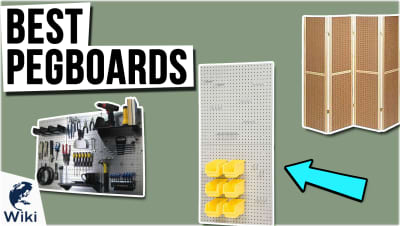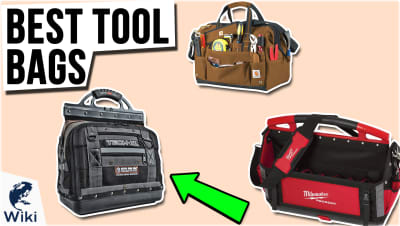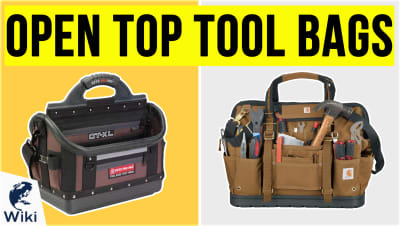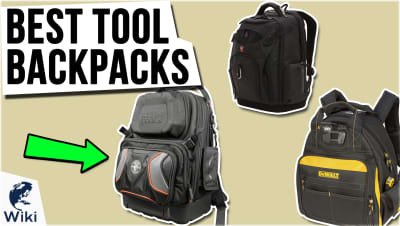The 10 Best Tool Chests

This wiki has been updated 40 times since it was first published in April of 2015. Tools are expensive. They're also easy to lose, especially if you're not in the habit of putting them back when you're done. These chests make it simple to store and organize your equipment, so everything is always where you need it, when you need it. Many are generously sized as well, which gives you the excuse you've been looking for to add to your gadget collection. When users buy our independently chosen editorial picks, we may earn commissions to help fund the Wiki.
Editor's Notes
April 22, 2021:
Apart from the Viper Storage Mini, which seemed to be suffering from some availability issues, all of our choices from last year still looked to be well-built options that would make smart choices for the right person. However, I took issue with some of our selections’ small sizes, and so we phased out the Craftsman 3-Drawer, Plano Molding Stow N Go 1363 and Apollo Tools DT5010 in order to make room for some new additions that we felt would better serve users shopping in this category.
The Seville Classics UltraHD is a choice that might appeal to users interested in wheeled, stainless-steel models like the Thor Group HTC7215W. Apart from its slick appearance, we particularly liked this one's configuration, which provides nine shallow drawers for hand-tool organization, plus one medium drawer, one large drawer, and a two-door cabinet for bigger equipment that won’t fit.
The Keter 241008 is an option with a telescoping handle that’s made out of resin, much like the Stanley 037025H. It doesn’t have saw guides like the Stanley model, but we favored this one because we were fans of its six-bucket hardware organizer that has a convenient, clear lid. It might seem like a small extra but in our mind it might often make the difference between making one trip to the truck or two, and we all know how big of a deal that can be.
The Milwaukee Packout is a modular model much like the DeWalt DWST17820. It’s tough. It’s versatile. And, its stackable nature means that it too is an option that’s likely to save you many needless trips to the van. If you’re a gearhead, you’ll also love the way its modular design lets you customize your setup over time.
Last but not least, the Knaack Monster Box made its way onto our list because there’s just no way that any list of tool chests is complete without the inclusion of a proper job box. Full stop.
If you find that the models on this list are too big for you, and you’re cursing my name for stripping all the smaller selections out, then my advice to you is to check out our lists of tool bags or open-top tool bags. A tool bag might seem like an intrinsically inferior option to a tool box, but modern models are lightweight, highly durable and provide ample opportunity for organization. If you want to get really crazy, give some thought to investing in a tool backpack.
March 06, 2020:
Eliminated five items from the rankings, including two that were no longer available. The Keter Masterloader seems like a serviceable model at first, but several reports indicate that it tends to break down shortly after the warranty expires. The Flambeau 6531BK suffers from low-quality wheels that easily break off.
Four of the five replacements we’ve added feature wheels for portability. Whereas three are relatively compact in size — making them easy to haul from job site to job site — the Husky Mobile and Milwaukee Red are full-sized cabinets, with useful features like work surfaces, pegboards and power strips.
A word of advice: if you’re loyal to a certain brand or manufacturer, check on whether the chest is stackable with other units made by the company. This can come in handy for maximizing storage space.
Special Honors
Uline Red Compact but rugged, this little chest keeps hand tools and construction supplies safe, secure and orderly. Each of the four drawers features a vinyl liner to prevent its contents from moving around, and it stacks neatly on top of other Uline tool cabinets and workbenches. uline.com
Unior 991HD Made with durable sheet metal, this hefty model comes with plenty of dividers for customizing compartments to fit your needs. A nifty safety feature: when one drawer is open, the others automatically lock, which prevents the chest from tipping due to too many extended drawers. uniortools.com
An Arsenal For Getting The Job Done
This comes in handy when needing to use tools in different locations from within a workshop.
Anybody who specializes in a particular profession maintains an arsenal of resources to get their job done. This remains true whether we talk about a profession or project requiring the use of physical tools, experience, knowledge, or a combination of all these things. Both professional and home cooks, for example, require a fully-stocked kitchen equipped with storage space for flatware, silverware, drawers for cutting tools, ovens, cooktops, and other appliances. The cook also needs to know where to find these items and how to use them.
While a cook doesn't always take these tools with them wherever they go, they remain a part of the cook's professional arsenal for crafting edible masterpieces. The same can be said for the machinist, plumber, mechanic, contractor, or any person who needs to keep various tools around and organized for quick access in a tool chest. While the concept of a tool chest is pretty simple (keeping tools organized and easy to find), there is more versatility into the application of this resource. A tool chest is more than just a metal box with a couple trays and a handle for transporting to job sites.
A tool chest (or toolbox) can refer to a compact storage unit designed for transporting specific tools (i.e. hammers, drills, screwdrivers) to various locations on the job. Depending on the type of work that needs to be done, the chest can be built with multiple internal shelves and compartments that are cut to specific sizes for accommodating both specialized and standard items. A tool chest can range in size from a small, portable box to a large, multi-drawer storage unit set on caster wheels for easy mobility. The smallest toolboxes have a single handle on their tops with a hinged lid. Some toolboxes feature removable tote trays or cantilever trays that are anchored at one end from inside the toolbox, which offer the user simultaneous access to small and large items on multiple levels.
Toolboxes are typically constructed from either plastic or metal (steel). While plastic toolboxes may not offer the same weight capacity for storing heavy-duty objects, metal also has a tendency to rust, particularly if a tool chest is constantly used outdoors. However, both materials offer their own advantages depending on the situation.
Not all tool chests have to be small and portable. For example, an automobile mechanic with an elaborate garage setup may leverage the use of a large tool chest on wheels so that he can move the chest easily while always knowing where his items are stored and from which pull-out drawers he can access them. Reliable tool chests offer significant drawer space and can also double as portable workbenches with flat surfaces. This comes in handy when needing to use tools in different locations from within a workshop. For professions that require the use of trucks and tool portability, these vehicles can be equipped with mounted toolboxes so that items can be easily accessed when parking at a job site.
A Brief History Of Tool Chests
The initial heyday for tool chests began in the 1900s with companies such as H. Gerstner & Sons, founded by Harry Gerstner in honor of his father Herman. Harry Gerstner made his first machinist tool chest while working as a pattern maker and woodworking apprentice. In 1906, Gerstner used a small sum to start his own tool chest company and began selling his invention door to door. Gerstner's tool chests were designed to accommodate the majority of precision tools required by the average industrial worker (or journeyman) of the time. The chests were also known for their superior durability and many are still in use today.
Other early tool chests were made primarily from heavy woods for the purpose of preventing the rusting of the tools stored inside. Their design intended for the safe and secure storage of various measuring instruments, drills and other objects. The majority of most machinist tool chests were made from combinations of oak, mahogany, and walnut. Some of these early chests also had shallow drawers lined with felt for cushioning more delicate items.
Although Gerstner's company was not the only one to manufacture tool chests in the early 1900s, it remained one of the most successful through decades of competition and still manufactures quality tool chests today.
Go With Your Instinct
There is no established definition of the best tool chest, as this differs from one professional to another. However, one must consider their needs and intended use. For the professional mechanic working out of a garage, a large and mobile tool chest with multiple drawers and a flat top will be beneficial. Caster wheels will allow for easy movement to different cars in the shop while a flat top will offer an additional working surface in one place.
Additionally, if you're concerned about your tools getting damaged, some of the most reliable tool chests include shelf liners that prevent objects from sliding around.
A good tool chest should also have a variety of drawer sizes to accommodate differently-sized tools, regardless of whether you consider yourself a veteran mechanic or an inexperienced worker. Small drawers near the top of the chest can store wrenches, screwdrivers, and ratchets, while larger drawers below would store those heavy and bulky power tools.
Finding a tool chest with an exterior powder-coated finish can add to its durability if you work with a lot of chemicals, sparks, and other industrial equipment that could otherwise scratch or damage the chest. Additionally, if you're concerned about your tools getting damaged, some of the most reliable tool chests include shelf liners that prevent objects from sliding around. Other tool chests even have socket and wrench organizers to keep the tools from moving out of place, which proves useful if you work with several different sizes of the same tool.
Finally, one must ensure that the tool chest chosen has a reliable locking system for keeping tools secure and away from children.



